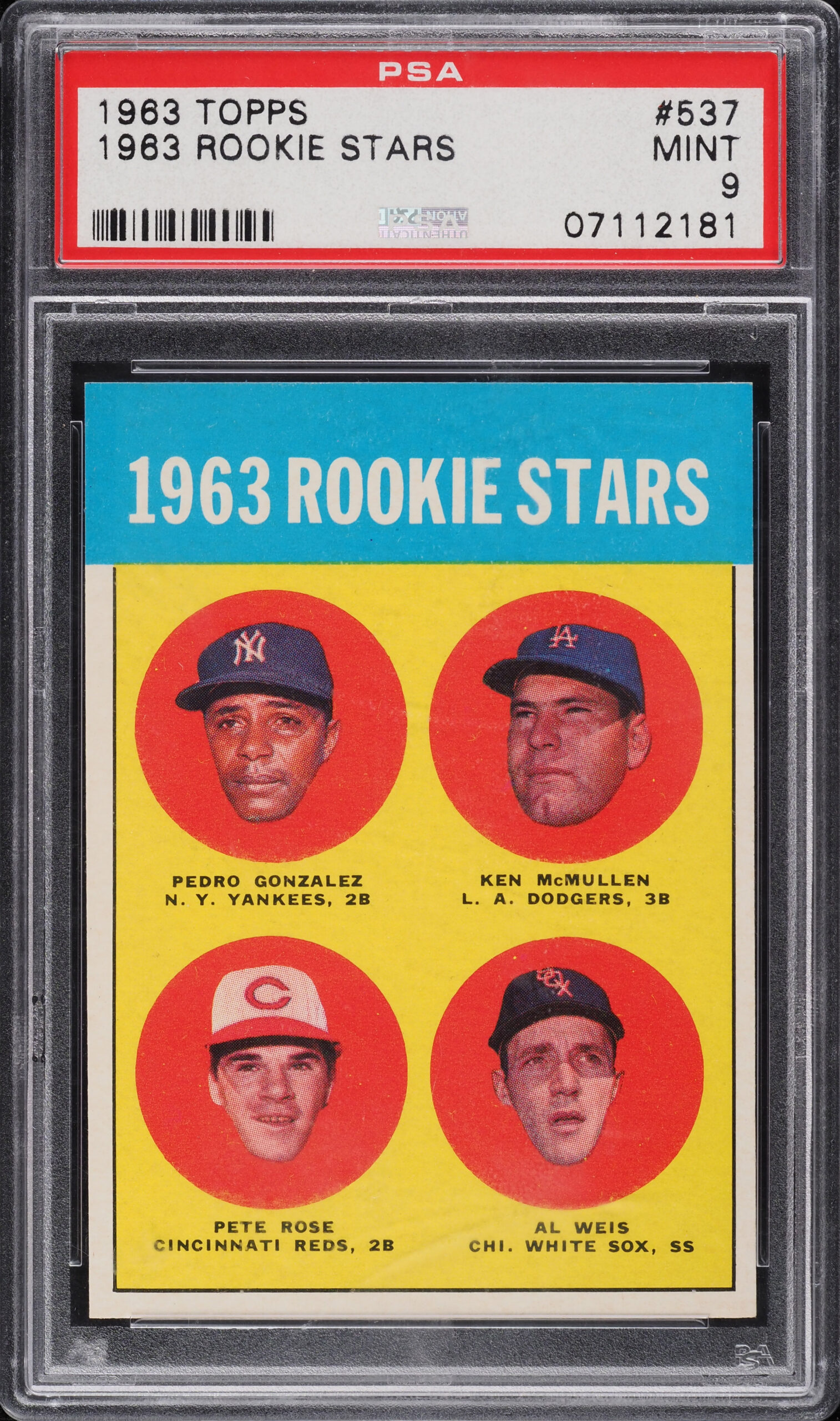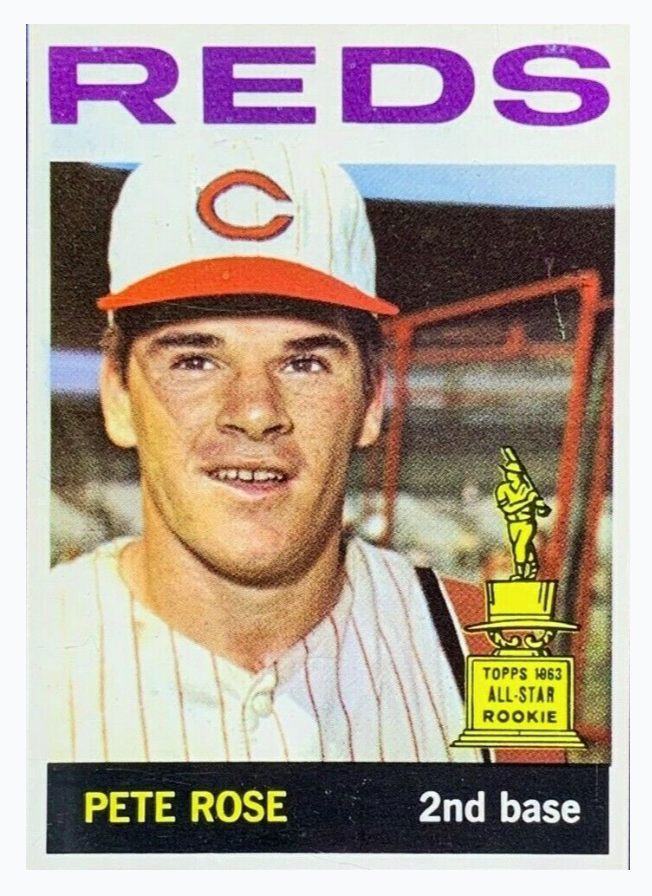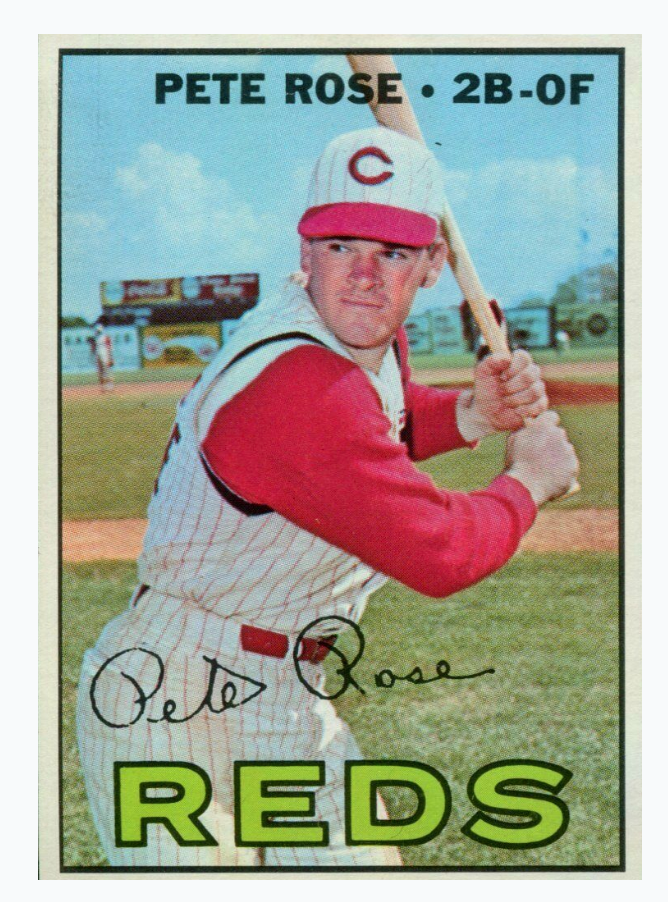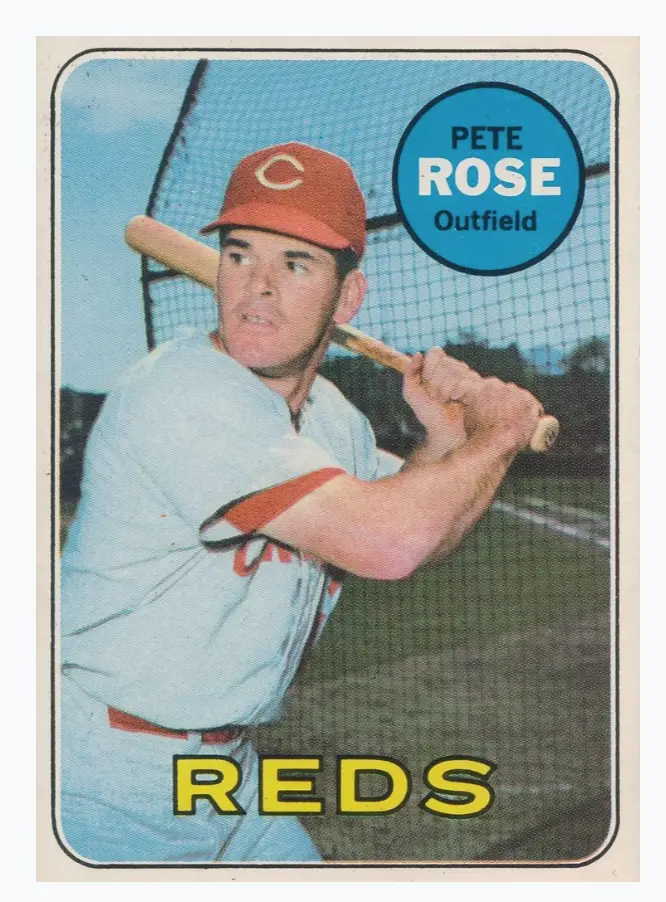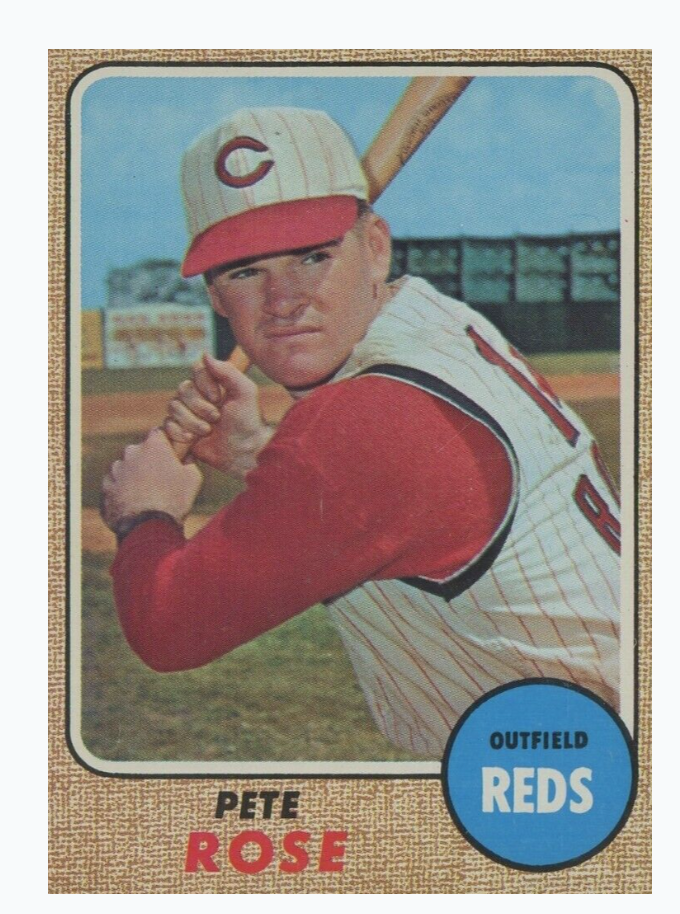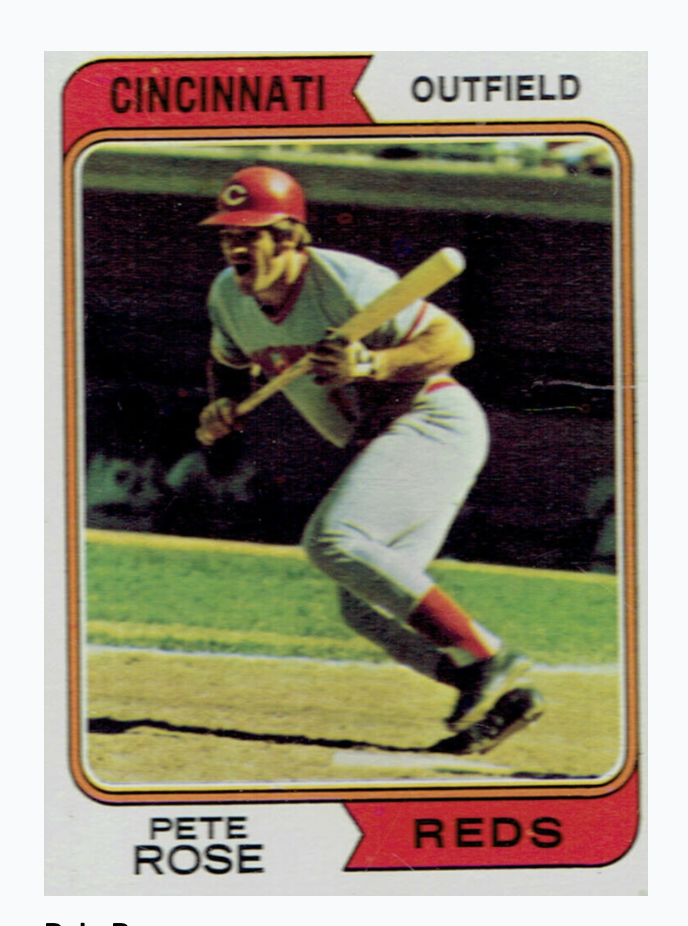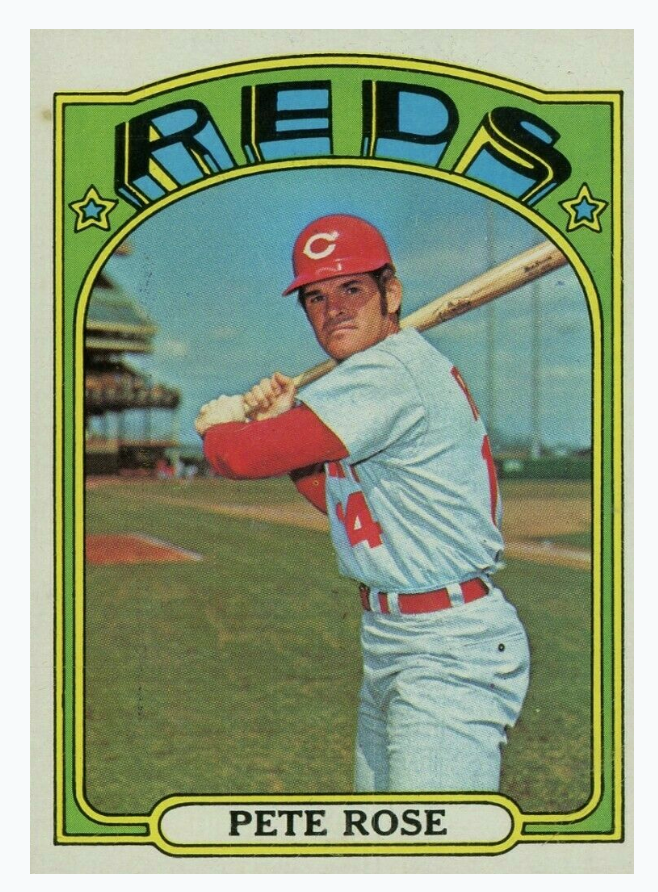Affiliate Disclosure: This post contains affiliate links. As I am a part of the eBay Partner Network and other programs, if you follow these links and make a purchase, I’ll receive commission. As an Amazon Associate, I earn from qualifying purchases.
Pete Rose, often dubbed the “hit king,” is a baseball legend whose impact on the sport is undeniable—for better or worse. Beyond his on-field prowess (and “off-field” issues) his baseball cards are still coveted and treasured collectibles.
Let’s dive deep into the top Pete Rose, exploring their value, yes, but also their significance, rarity, and design. And since it’s tough to find many vintage cards in PSA 10 condition, I’m going to stick with describing them all through a PSA 9 lens.
Most of these will be based off the Market Movers 90-day average, but in some cases, it was the only card sold over that time period. A couple of others haven’t been sold within that window, or even within the last year or so, where noted.
1. 1963 Topps #537 Rookie Card PSA 9 ($71,000)
It’s a rare occasion when looking at a most valuable card list of any player and not have their rookie card atop the list. This Pete Rose list follows suit, with his 1963 Topps rookie card taking the cake as the most valuable.
The problem is, just how valuable is a PSA 9? According to Market Movers, the last PSA 9 sold in June of 2021 for a whopping $71K, with one selling just four months earlier for over $116K. Times have changed since then and the card market has calmed, but either way, a PSA 9 Pete Rose rookie would be an amazingly-valuable find.
2. 1964 Topps #125 All-Star Rookie PSA 9 ($33,600)
Now, much in the way that a 1969 Topps is near the top of the most valuable Nolan Ryan cards, the 1964 Topps “second year” Pete Rose stands out as his first solo Topps card, adorned with the collector favorite, the gold rookie rookie cup.
The 1964 Topps set itself s known for its vibrant colors on the plain white, simplistic design, emphasizing player portraits contained within. As a result, collectors cherish the 1964 entry not just for its imagery, but for the story it tells—a snapshot of a young Rose, hinting at the legendary career ahead.
3. 1971 Topps #100 Pete Rose PSA 9 ($10,200)
Some sets are notoriously tough on card conditions and thus difficult to grade. 1971 Topps is probably one of the harshest thanks to it’s all-black border. I mean, a canvas so susceptible to chipping woul dbe a nightmare as a new release, let alone one that came out over 50 years ago.
As such, a PSA 9 Pete Rose has a ridiculously low population of 15, and the last one sold according to Market Movers took place on PWCC in July of 2021, selling for over $10K. Oh, and the PSA 10? It has a pop 1.
4. 1967 Topps #430 Base PSA 9 ($4,959)
The 1964 Topps set made the player’s portraits look so good that they decided to go with a similar design, just opened up—as in popping out the white background to make a larger canvas for the picture. (Not sure if that was actually the thinking, but makes for a nice story).
Whatever the reason, I’ll always prefer the “action shot” or at least one with a bat in hand versus a plain headshot. Not to mention that old time baseball stadium background, which, while before my day, just evokes nostalgia and the feeling of dirt, sweat, and hard work.
5. 1969 Topps #120 Base PSA 9 ($2,395)
Alright, so hear me out: 1964 Topps plus 1967 Topps equals the 1969 Topps Pete Rose. From 1964 we get the white border (albeit trimmed down), the all caps “REDS” at the bottom, and even the batting cage in the background. And then from the 1967 Topps, we get the bat and pose and enlarged field background.
I don’t know; I’m sorry—these are the things that go through my head when I’m looking at baseball cards. It’s about the whole card, not just the player. Oh, and having said that, 1964 listed Rose’s position as 2nd base, while 1967 listed both 2B-OF. This one, of course, just lists outfield.
6. 1968 Topps #230 Base PSA 9 ($2,109)
I was semi-joking above, but looking at the cards back to back and one after the other like this allows you to really see the evolution of each design, similarities, differences, and more.
In 1968, the design wasn’t a far departure from previous years, but the inclusion of the burlap-type background was something new and different, which gave the card an entirely new feel.
Of course the 1968 set is one to remember thanks to the Nolan Ryan rookie, but the Pete Rose 6th-year card still holds strong as we venture into a new decade.
7. 1970 Topps #580 PSA 9 ($1,710)
Can’t say for certain but my gut tells me 1970 Topps is a polarizing set. I personally do not enjoy it and feel it lacks any sort of excitement whatsoever. That said, the set’s reserved and laid back mentality is a reason why some collectors crown it as the hobby’s most underrated.
For Pete Rose collectors, if you’re into the scowl, this card is for you. The zoomed in photo and lack of flair offered by the team and player name in black really makes you focus on Pete’s expression and hat.
8. 1974 Topps #300 PSA 9 ($1,290)
I’m not saying this as a universal fact, but it’s something I like to bring up when you see things like a 1974 card with close to the same value as a card a few years older—design and photo matter when it comes to a collector’s love for a card. I mean, for me, I won’t buy particular A’s players’ autos because I don’t like how their signatures look. Same thing.
So when you compare the 1974 card’s emotion and design to something as lackluster as 1970, it’s no wonder the two aren’t that far off in value despite the age difference. The photo itself captures a candid moment, a snapshot in time on the field, reminding collectors of Rose’s consistent grit and his contribution to baseball’s golden era.
9. 1972 Topps #559 Base PSA 9 ($1,000)
I was going to stop there, but 1972 is heralded as one of Topps’ best card designs. Simply put, it’s so 70s retro it hurts (so good).
Not the most exciting of photos, and from this list you can see that the pose and setup isn’t a far departure from Rose’s other Topps cards. So, if nothing else, let the design carry this one into your collection.

